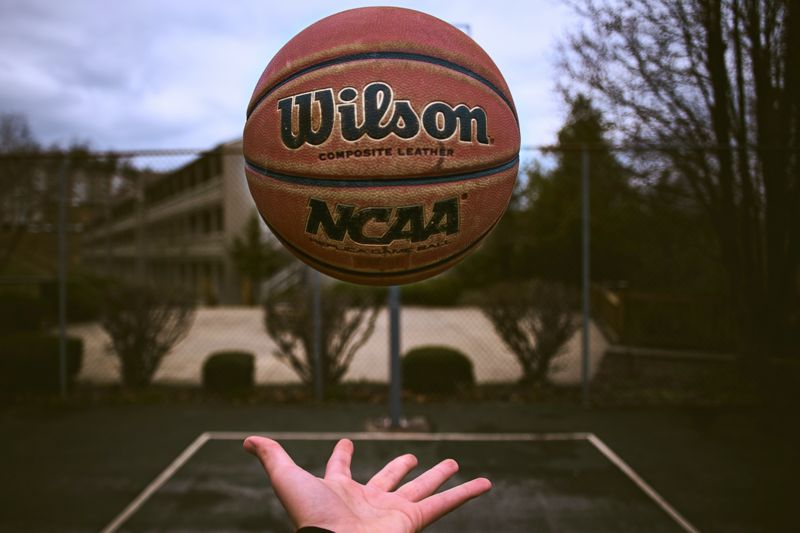5 Things to Do to Play College Sports

Step 1: Register!
More than 180,000 students register with the NCAA hoping to become an NCAA athlete. Which means before you get very far down your NCAA or NAIA dream scheme, you have to join those ranks and register with the NCAA. You can register for NAIA (National Association of Collegiate Athletics) here: https://play.mynaia.org.
You should do this before you visit schools and talking to coaches. If you want to play college sports, the latest you should do this is the start of your Junior year of Highschool.
Step 2: Know the Academic Requirements to Play College Sports
Every college has an academic standard their athletes must maintain. Know what this is before you reach out to any coach. Make sure you’ve met the high school requirements and that your current grades are equivalent or above this standard.
If you haven’t met the high school standards to play, you won’t be able to play college sports your first year. But you may still qualify as an academic redshirt, which allows you to practice during your first term and still receive an athletic scholarship for the whole year. This allows the coaching staff to see how you perform, how you fit in with the team, and what potential you have.
To really understand fully the academic requirements to play college sports, see your high school coach, counselor, or consult with an experienced independent educational consultant like the ones you will find at www.cracecollegeconsulting.com
Step 3: Contact College Coaches
Once you register and submit your academic information, it remains unreviewed until a college requests it in the recruitment process. Simply registering does not guarantee you will be contacted or recruited by a college coach. If you want to move things forward, it’s in your best interest to be proactive and contact the college coach first and complete their recruiting questionnaire so you are added to their data base. All coaches are listed on the college’s athletics website with their email address.
Emails
Most coaches prefer an email introduction or contact through their recruiting questionnaire. This is an easy first step for you because most coaches have their email address listed on the college website.
Coaches receive hundreds of emails every week, so make sure your subject line and content stands out. Personalize your email, include your high school coach’s contact information, the position you play, an accomplishment or two, your current stats, and your GPA. And let them know where they can watch you play so they can check out your talent.
Phone Calls
There’s always a chance a coach will be in the office and available to take your call. Research the school before you call and show your intelligence by knowing significant aspects about the school and why that school is of interest to you. Don’t apply just to apply! Know why you are applying there and clearly communicate that to the coach.
Just as in your email, personalize your introduction to each coach. This might include the coach’s record, style of coaching, or even something you love about the school. If the coach doesn’t answer, leave a message and then follow up with an email.
Letters
Letters are a bit more old-fashioned these days. In fact, most coaches will ignore letters unless they’re familiar with you as an athlete. Your best bet is to email or call.
However, should a coach send you a personal letter, not a form letter mailed to thousands in their data base, respond immediately. A personal letter back at this point would be appropriate. Address the letter specifically to the coach that mailed to you.
Online
Make sure your NCAA or NAIA online profile is up to date. Don’t forget, they’ll probably visit your social media accounts as well. Make these are sports-focused. Clean up any content you don’t want a recruiter to see. You don’t want a coach visiting your Instagram only to find you sharing images of last weekend’s pranks.
You might also start following the coach on their Twitter account. This allows that coach to direct message (DM) you which is permitted by the NCAA and NAIA. DM’s are private conversations between you and that coach and a way to build your relationship. Character counts! Don’t blow off a coach. Be honest and demonstrate integrity.
Step 4: Explore Scholarship Opportunities to Play College Sports
Only a few college athletes land a full-ride scholarship, but that doesn’t mean you can’t pursue a partial scholarship. As you explore any scholarships, ask the following:
- Injuries: Know what will happen to your scholarship if you become injured.
- Academic Assistance: Find out if you’ll have any academic support while you’re traveling or out of the classroom for sports activities.
- Improvement: You’re probably coming on as a freshman right out of Highschool. Know what happens if your skills improve.
- Coaching Changes: Is the current coach planning on sticking around? Know what happens to your scholarship if there’s a change in coaching staff.
Step 5: Follow Up
Following up is a great rule for life, not just pursuing your athletic dreams. It’s valuable when you’re trying to achieve any goal. Here are a few ways to follow up when you want to play college sports:
- If you make a phone call, followup with an email.
- If you sent an email but don’t hear anything back, followup.
- Believe in yourself. This positivity takes you far!
- Continue to grow your athletic ability.
- Don’t compromise. This includes your integrity, your well-being, and your relationships.
- Stay humble.
